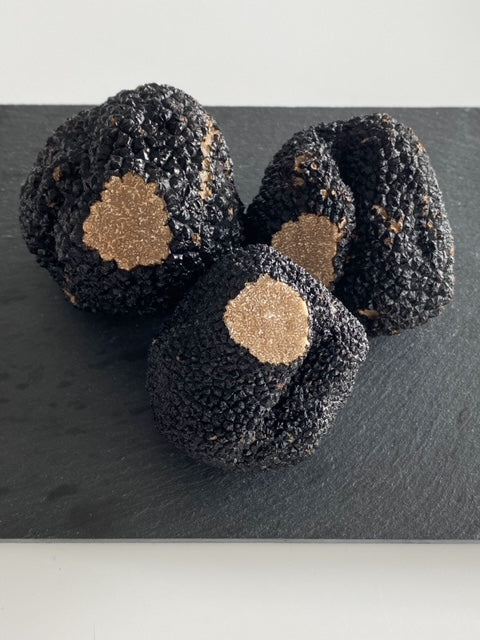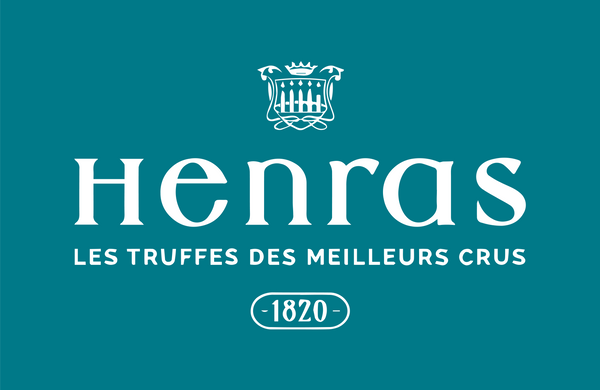
All the secrets of harvesting the diamond of gastronomy in an article presenting you with the different techniques used to harvest truffles. Immerse yourself in their universe, and learn more about the life of our truffles from the best vintages before arriving at the Maison Henras workshop.
WHAT IS CAVAGE?
The truffle can be harvested in many ways, there is direct harvesting by humans using instruments and methods qualified as indirect and carried out using animals. In any case, we speak of cavage to designate the action of looking for and finding a truffle. The word " caver" has its roots in Italy where " cavare" means to extract or to dig . In France, the annual digging calendar for the Périgord black truffle is officially governed by a prefectural decree.
DIRECT CROWDING
Direct digging encompasses truffle research practices that require human action. It is used very little because it has long since been replaced by indirect digging with animals.
Direct digging is essentially carried out with a pickaxe . This technique consists in turning over the earth in the places supposed to contain tubers in the hope of finding fresh truffles at maturity.
However, there are several drawbacks to this method :
- A very energy- intensive technique with a very low rate of return: truffle fields are not only made up of mature truffles , so there is a good chance of digging up truffles that are too young, worthless for the consumer because they have no taste.
- A destructive practice for truffle fields which are based on a fragile balance: the ransacking imposed by the blows of pickaxes can destroy the harvest of truffles on the truffle field for years.

This technique is often practiced by marauders who have little respect for truffle cultivation. This wild digging is nevertheless prohibited . Poaching is also qualified as aggravated theft by law and is punishable by a fine of 45,000 euros and 3 years in prison.
Direct digging is also the search for truffles with the naked eye, the cellarer will use visual data to locate the truffle and to precisely locate the truffles that have reached maturity.
The truffle field can be identified thanks to the absence of vegetation around the place where the truffles grow , the ground seems burnt. This exercise is easy in an artificial truffle field, but in the middle of nature the truffle fields are more difficult to spot, their locations can be desert or wasteland .
Once the truffle field has been found, it is necessary to locate small cracks or cracks above small upheavals in the ground. This particular relief is created when the truffles in the basement are ripe. This quest can also be supported by the presence of the truffle fly . This one often twirls just above its nest, which is nothing but a truffle . Finally, people with a very fine sense of smell can also rely on their nose to spot the surrounding truffles .
INDIRECT CROWDING
As specified above, indirect digging is practiced using animals . The pig has long been used to search for truffles and is now part of the folklore of truffle markets , testimony to an ancestral know-how. He was replaced by man's most faithful friend, the dog .
- Cavage with the pig
The cavage with the pig is an ancestral practice which is perpetuated until our days although it has become residual.

The truffle is indeed one of his favorite foods and he has a natural ability to locate it exactly thanks to his flair , even if it is buried deep.
Once spotted, he dislodges the mushroom with his snout and the caveur (or rabassier) must then quickly recover it before he consumes it. To thank him for his discovery, he will reward him by offering him acorns or chestnuts.
The training of a pig begins at a young age until it is 4 years old. As its lifespan is long, it can cave for nearly 20 years. In general, sows perform better than males because they are more voracious and generate a better yield.
- The dog, a caver with an exceptional sense of smell
The truffle dog is specially trained to recognize the scent of a truffle . From birth the toys, but also the mother's teats, are coated with truffle oil . At the start of his training, he will be entitled to a treat for each unearthed truffle . Later, he will be motivated to cave just to please his master.

No breed is specifically predisposed to digging , however, hunting dogs should be avoided as they prefer to run after game whenever they spot one. Learning must be carried out with care and a lot of patience. This step can be entrusted to a professional who has specialized in this discipline. In the Alba region of Italy, there is even a school dedicated to training truffle dogs . During training, it will also be up to the master to make him understand the good maturity of the truffle according to its aroma. He will thus miss those that are not yet ready to be harvested .
Once it is up and running, the truffle dog spots the fungus and digs into the ground to mark its location . The caveur will then use his cavadou (also called truffle pick) to release it. The advantage of the dog compared to the pig is that it is more skilful , its sense of smell is sharp and above all, it will not be tempted to eat the truffle . Finally, owners who do not have dogs can ask those who do have them to dig out their land.

